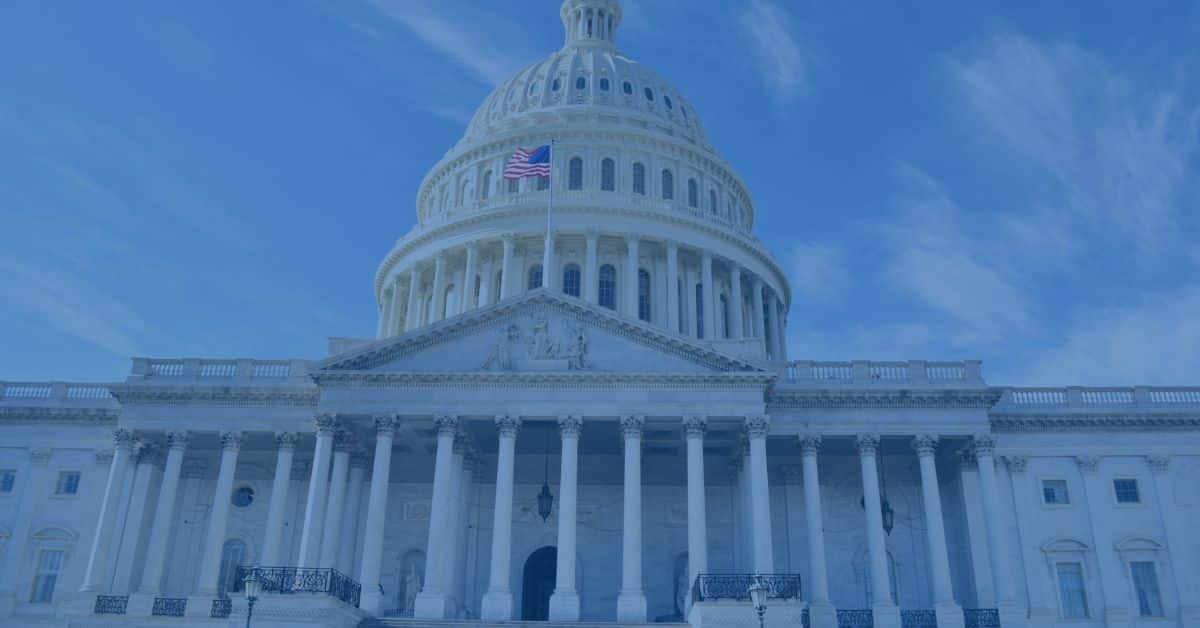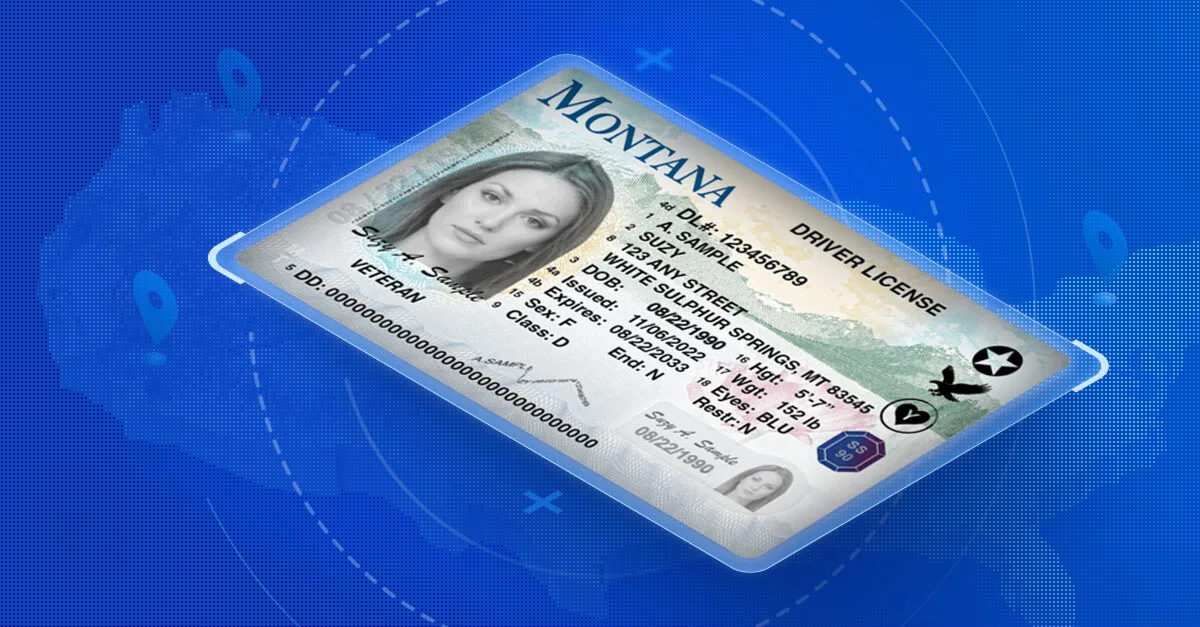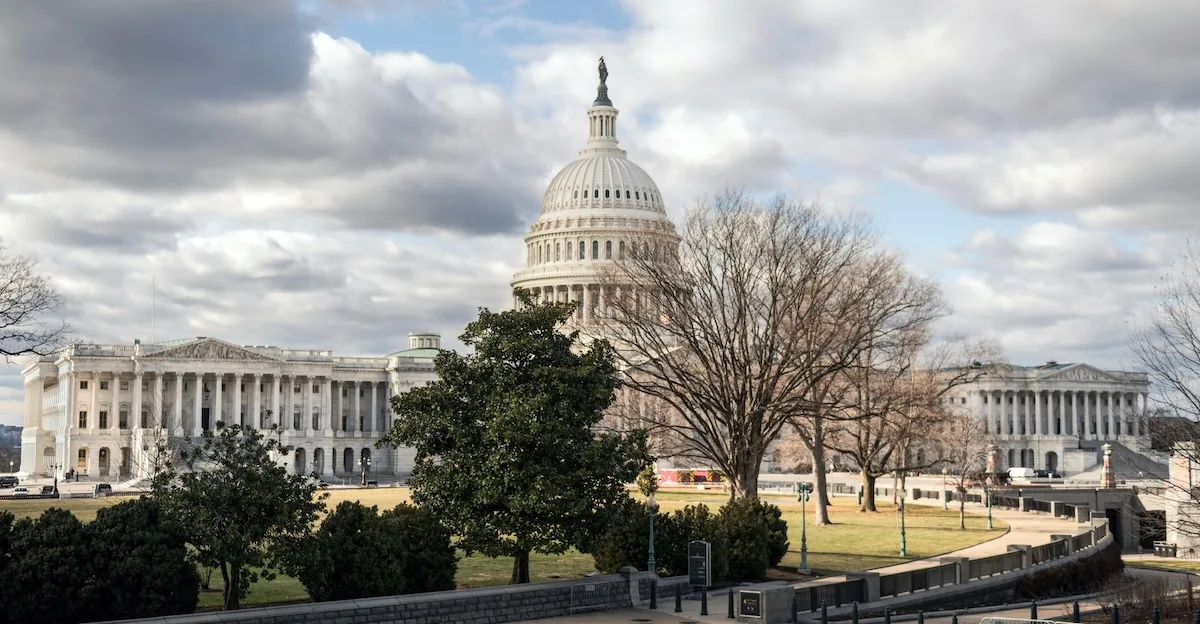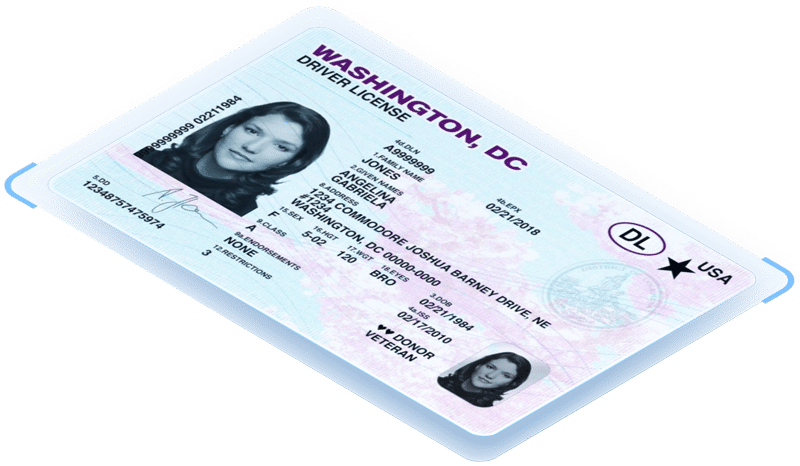Trump’s second presidential term could be a watershed moment in the identity verification industry. Federal adoption, state-level policy expansion, and a landmark Supreme Court ruling all have the potential to make a major impact on identity verification operations.
Additionally, the private sector is rapidly addressing their own sea of changes in identity verification, driven by the proliferation of digital IDs and mobile drivers licenses.
As government pressure converges with private sector demand and rising incidence of ID fraud, we’re tracking some of the top trends which we believe will leave a lasting impact on the landscape and drive the major changes in process, performance, and consumer sentiment through 2026 and beyond.
US Supreme Court upholds states’ right to force age verification online
On June 27, 2025, the Supreme Court upheld Texas’s age verification law in a 6–3 decision, ruling it survives intermediate scrutiny and merely imposes an incidental burden on adult speech.

Texas HB 1181 requires certain commercial websites publishing sexually explicit content to verify that visitors are at least 18 years old. The ruling ensures that similar age-verification mandates across states remain constitutionally viable.
This decision effectively opens the floodgates for state-level identity verification laws, especially those aimed at restricting access to online content, age-gated services, or certain types of transactions. Since 2022, more than a dozen states have passed similar laws. While additional legal challenges are likely, this ruling provides a strong precedent.
Strengthened identity proofing in Federal benefits
Starting March 2025, the Social Security Administration (SSA) tightened identity verification for benefit applicants. Individuals applying for retirement or auxiliary benefits must now appear in person at SSA field offices.

Previously, the Social Security Administration allowed for telephone or digital verification to access benefits, but claims that significant fraud mandates a change. While disabled or terminally ill applicants remain exempt, most benefits recipients will face stricter in-person checks. This change aims to reduce fraud but also raises concerns about accessibility due to office closures and staffing cuts.
Rapid proliferation of digital IDs and mobile drivers licenses (mDLs)
More than 15 states have adopted mobile drivers licenses, and an additional 12 are predicted to launch in 2025.
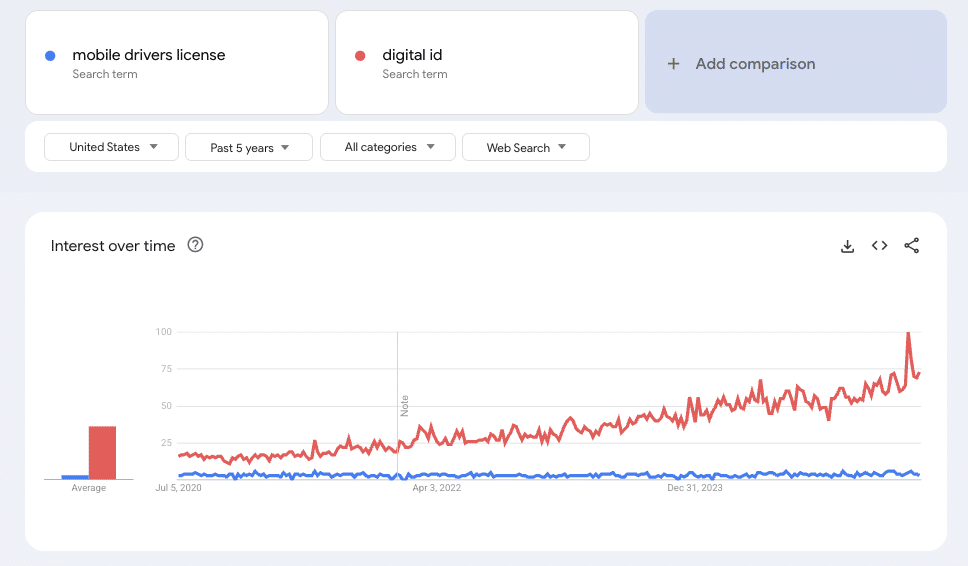
As identity verification becomes increasingly digitized, mobile driver’s licenses (mDLs) are rapidly gaining ground across the United States. Not only are more states adopting the technology, but the ecosystem around mobile IDs is expanding in tandem. Increasing numbers of retailers and government agencies are accepting mDLs, significantly increasing their real-world utility, and digital wallets from Apple, Google, and Samsung are enabling native support for storing and presenting these IDs, helping drive adoption.
Even in states without current mDL programs, demand is growing rapidly. Residents in states like North Carolina, Pennsylvania, and Illinois have expressed strong interest in digital credentials, especially as neighboring states roll them out and interstate recognition becomes more plausible.
With legal precedents affirming ID-based access restrictions and growing infrastructure support, mDLs are poised to become not just a convenience, but a standard.
Department of Education crackdown on financial aid fraud
In June 2025, the Department of Education issued a mandate requiring more than 150,000 students receiving federal aid to verify their identity in-person or over Zoom

A growing threat to university security is the emergence of ghost students, which are fake or misused student enrollments. These fraudulent enrollments are used for access to benefits like student loans, student discounts, WiFi, testing services, and physical access to housing, libraries, or other campus facilities.
Ghost students pose threats to a school’s security, finances, and academic integrity. In response to rising concerns around identity fraud in higher education, particularly cases involving ghost student IDs, the U.S. Department of Education has announced significant changes to identity verification protocols for the 2025–2026 FAFSA cycle.
Effective immediately, all first-time FAFSA filers receiving Title IV aid will now be automatically selected for V4 identity verification, mandating institutions to collect and maintain copies of government-issued photo identification, either in person or through approved remote methods. Colleges and universities are allowed third-party identity verification providers to meet these new identity verification requirements, provided they meet the National Institute of Standards and Technology (NIST) Identity Assurance Level 2 (IAL2) standards.
REAL ID compliance is finally here
After years of delays, TSA and federal buildings are now enforcing stricter ID standards

As of May 7, 2025, the federal government began fully enforcing the REAL ID Act, marking a major shift in identity standards for travelers and visitors to federal buildings. While all 50 states and territories are now issuing compliant IDs, compliance varied widely, with some states lagging as low as 17% of REAL ID-compliant licenses as of April 2025.
Temporarily, travelers without REAL IDs may still fly, but should expect secondary screening and significant TSA delays, prompting advice to arrive 3 hours early. Passports are accepted in lieu of REAL IDs at all TSA locations, and REAL ID-compliant mobile drivers licenses are accepted at participating checkpoints.
This enforcement solidifies REAL ID as the new baseline for US air travel and federal access. The deadline, after being delayed multiple times since its 2008 conception, finally aligns physical IDs with national security cyber standards.
Wider adoption of strict Voter ID laws
States now face legal challenges if they do not comply with voter ID laws that enforce REAL ID usage

In March 2025, Trump issued an executive order mandating proof of citizenship on federal voting forms and threatened to cut funds to non-compliant states. This mandate requires voters to provide government-issued photo ID, such as a passport, REAL ID, or military ID.
Since 2016, voter ID laws have been a polarizing issue, portrayed by proponents as essential to election integrity and by opponents as disenfranchising. This issue was a focal point during the January 2025 Los Angeles wildfires, when Trump publicly stated that he would withhold federal wildfire relief for California unless the state adopted a stricter voter ID requirement.
Several states have begun changing, or attempting to change, their voter ID laws in 2025, including:
- Nevada: In June 2025 the state passed landmark legislation requiring photo ID at the polls, paired with expanded absentee ballot drop-box access.
- Wisconsin: Voters approved a constitutional amendment on April 1, 2025, requiring photo identification for all in-person voters. The measure passed with approximately 63% support and cements the requirement at the highest legal level.
- Idaho: The state legislature introduced HB 549, aimed at removing student IDs as acceptable forms of voting ID, eliminating affidavit options, and repealing same-day registration. The bill stalled in committee amid public backlash.
As the state and federal trend of bolstering voter ID requirements continues, states must quickly formulate effective, replicable methods of verifying voter identity to meet the new, more stringent standards.
The onus of age verification is shifting to the app stores
New legislation will require Apple and Google to verify age, and let app makers off the hook

In a major regulatory turn, new legislation in multiple US states is beginning to shift the responsibility for age verification away from app developers and onto the app stores themselves, primarily Apple’s App Store and the Google Play Store. This approach is intended to lighten the compliance burden for developers by centralizing age verification at the distribution level. But it comes with complex implications.
Recent laws in states like Arkansas, Utah, and Texas, as well as proposed federal legislation, mandate that platform providers (not individual apps) verify the age of users before allowing access to age-restricted content or services, including social media apps, games with mature content, dating platforms, and apps with in-app purchases targeting children.
While neither Apple or Google have fully detailed their technical solutions, possibilities include tying app access to device-level ID verification, using account-based facial recognition tied to a government-issued ID, and AI-based age estimation tools.
This change centralizes enforcement but opens up a new front in the debate over digital identity, privacy, and the balance between child safety and adult freedoms.
Rising identity fraud has businesses and consumers worried
More sophisticated tactics are fueling demand for stronger ID verification

In 2025, identity fraud is reaching record levels, with both businesses and consumers experiencing the fallout. From synthetic identities used to open fake accounts to AI-generated fake IDs and manipulated mobile credentials, the fraud landscape is rapidly evolving.
Research conducted by IDScan.net found that more than 25% of people said they had fallen victim to an identity fraud-related scam, and the majority of these victims blamed AI. Furthermore, 32% of consumers expressed their doubts regarding current technologies protecting their identity.
In response, businesses are accelerating adoption of tools like multi-factor authentication, government-issued ID scanning, liveness detection, and cross-referenced biometric databases. However, this arms race in verification technology also raises concerns about privacy, data storage, and false positives, leaving both industry and individuals searching for a secure, balanced path forward.
Consumer concerns around data privacy and surveillance
Growing internet chatter around identity verification processes and provider security is driving tough conversations about verification online.

As ID-scanning policy evolves, public concerns have escalated over data retention and surveillance. In early 2025, Trump removed three Democratic members from the Privacy and Civil Liberties Oversight Board (PCLOB), a move that effectively rendered the board nonfunctional, as it no longer meets the quorum required.
The PCLOB plays a crucial role in ensuring that U.S. surveillance and data policies protect civil liberties, especially in the context of international data transfers. One of its key responsibilities has been to reassure the European Union that US practices comply with GDPR-like standards when handling EU citizens’ personal data.
This development raises serious concerns about the future of privacy in digital identity systems, including mobile driver’s licenses (mDLs). The current global standards—ISO 18013-5 and ISO 18013-7—place a strong emphasis on privacy-preserving architectures, including user consent, selective disclosure, and offline verification. As states continue to roll out mDLs, privacy experts and the ACLU have warned against systems that “phone home,” or notify the issuer or government every time an ID is scanned. The argument is that this feature can enable surveillance-style tracking of individuals’ movements and online behavior.
If the PCLOB remains inactive, privacy advocates warn that the U.S. may shift toward a more surveillance-aligned model for digital identity, raising alarms across both domestic civil rights groups and international partners. In May 2025, a US District Court ruled that the termination of two of the three fired members was unlawful. These members are now continuing their service on the board until their terms end, unless the government appeals the ruling and a higher court rules differently.
2025 and beyond in identity verification
As we move through 2025, identity verification is no longer a behind-the-scenes process; it’s becoming central to how we access services, protect public safety, and enforce age and eligibility standards. From state-level ID laws to mDL adoption and federal mandates like REAL ID, the role of personal identity is being reshaped in real time. What’s clear is that verification technologies will continue to expand in scope, raising important questions about who sets the rules, how data is managed, and what trade-offs we’re willing to accept for convenience and security.
As governments, platforms, and consumers all seek more trustworthy ways to verify identity, there’s an unprecedented opportunity to utilize and build systems that are both secure and privacy-respecting. With thoughtful design, legislative clarity, and continued innovation, the next wave of identity technology could offer not just protection, but empowerment.

